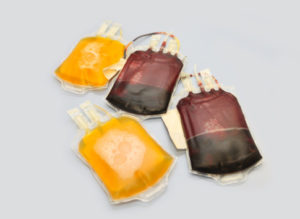Although numerous studies have reported improved survival for trauma patients transfused with higher ratios of fresh frozen plasma (FFP) compared to red blood cells (RBCs), there is limited evidence for this association among non-trauma patients requiring massive transfusions (>10 units of RBCs within 24 hours). Researchers in Boston recently performed a retrospective study of patients requiring massive transfusions over 4 years (N=865) at the Massachusetts General Hospital. Overall, the transfusion ratios of FFP:RBCs were similar between patients who survived (1:1.5 units) and those who died (1:1.4 units) (P=0.43). Most massive transfusions were received by non-trauma patients (N=767, 89%), for which the primary reason was intraoperative bleeding (N=544, 63%). Among non-trauma patients, survival was similar between patients receiving high transfusion ratios of FFP:RBCs compared to low transfusion ratios of FFP:RBC. However, lower transfusion ratios of FFP:RBCs increased survival for medical and general surgery patients. On the other hand, patients undergoing vascular surgery requiring massive transfusions had a better chance of survival with higher FFP:RBC ratios. Additional studies are needed to determine the optimal transfusion ratio of FFP:RBCs for non-trauma patient subgroups undergoing massive transfusion.
Show Comments
Comments on this article are closed.

